Posts in Category: EdTech
Coding
Coding

What is Coding? Coding is the process of using a programming language to get a computer to behave how you want it to. Every line of code tells the computer to do something, and a document full of lines of code is called a script. Each script is designed to carry out a job. This job might be to take an image and change its size. It might play a certain sound or piece of music. When you click like on someone’s post on social media, a script is what makes it happen. Unlike people, computers will do exactly what you tell them to. This might sound great, but it can cause problems. If you tell a computer to start counting upwards, and don’t tell it to stop, it’ll keep counting forever! Being a good programmer is all about knowing how to tell a computer to act. Link: https://www.youtube.com/watch?v=aTkoei6-uGU
Why is Coding important?
- It will increase your earning potential massively
- You could work for yourself
- You can work on your projects
Coding vs Programming? Now that we have started to answer the question, ‘What is coding?’, it’s time to look at something else quickly. In the tech world, there is one debate that has been raging on for years, if not decades. It is a debate of programming vs coding. Or do we mean coding vs programming? Either way, the debate is largely pointless one, as we will go on to explain below. In technical terms, coders and programmers are different. ‘Official’ definitions go something like this: Coder – A coder is someone who takes what we want to say in one language, such as English, and translates it to another language, such as Python. In this sense, the action of coding is simply writing a script that will execute a specific action. In official terms, a coder is a person who fully understands what is coding and ‘spits out bits of code’ which are then fed into a larger computer program and used to create a website, an app, or anything else which requires bits of code. Programmer – a programmer also crafts bits of code that fit together to create a program. They oversee the development of an app or computer program and are responsible for tweaking the bits of code that it is composed of.
Popular Coding Languages

- HTML
- CSS
- Python
- Java
- JavaScript
- C++
- Swift
- Typescript
- Go Programming Language
- SQL
- Ruby
- R Programming Language
- PHP
- Perl
- Kotlin
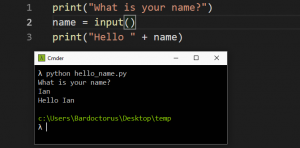
10 benefits of coding that have nothing to do with coding:
- Creativity
- Problem solving
- Teamwork
- Presentation skills
- Learning to learn
- Empathy
- Resilience
- Authentic Learning
- Like-Minded friends
- Confidence booster
As teachers, 8 ways learning to code can benefit you at this very moment include:
- Tech is everywhere
- Versatility is key
- Proceed with confidence
- Make more money
- You can do it
- Critical thinking is critical
- Our robot overloads.
- The power of language
Link: https://skillcrush.com/blog/learn-to-code-benefits/
How to Code for Beginners?

- Work out why you want to learn how to code.
- What sort of skills you want to end up with
- Why do you want to learn to code?
- How much time and money you can commit.
- Choose the right languages
- Choose the right resources to help you learn
- Download a code editor
- Practice writing your programs
- Join an online community
- Hack someone else’s code
- Keep learning
Overview (breakdown):
- Work out why you want to start learning and what you hope to achieve.
- Choose the right languages to help you achieve this.
- Choose an online course and start learning these languages.
- Download the right code editors.
- Practice, practice, and practice some more!
- Join an online community.
- Hack someone else’s code.
- Never stop learning…
Link: https://www.bitdegree.org/tutorials/how-to-code-for-beginners/
Google Apps for Education
Google Apps for Education

Google Apps for Education is a core suite of productivity applications that Google offers to schools and educational institutions for free. These communication and collaboration apps include Gmail, Calendar, Drive, Docs and Sites, and a GAFE account unlocks access to dozens of other collaborative tools supported by Google. All of these applications exist completely online (or in the cloud), meaning that all creations can be accessed from any device with an Internet connection. Google Apps for Education does not need a personal google account to access these apps. It is linked to your school account, which is also linked to all google apps. Similarly, because these files are not saved on your hard drive, and they are saved on a server someplace else. It is considered to be a cloud based server. It provides applications that allow students to work collaboratively from different afar and it saves work automatically. Google offers the freedom to move between devices and administrators with a variety of free services. Other similar platforms come at a cost, so Google is used widely in schools as a tool for students and teachers alike. Essentially, Google modernized the tools that Microsoft already offered.
Explaining Google Apps: Google Apps is a core suite of communication and collaboration applications that allow students to work from any device on documents and projects.
- Once a school registered email address is registered with Google Apps for Education, teachers and students can unlockGoogle’s apps with one login.
- An “office suite” of tools – Docs, Sheets, Slides, and more – that offers the ability to work from any device as well as share and collaborate.
- Because all Google Apps save to the cloud, teachers and students gain the flexibility to work from any computer or device.
- Students and teachers can seamlessly save work and collaborate both synchronously and asynchronously.
Pro’s & Con’s of Google Apps for Education & Google as a cloud-based Server

Pros
- Free 15 GB of storage
- Cost-effective ($2.79/month for 100 GB)
- Expanding offices into Canada
- Easy to navigate- categories, folders, recent (if forgotten to sort), search bar
- Easy sharing/collaboration
- Option to set sharing preferences (who can edit, only view, public or private file)
- Commenting, chat in documents
- Most versatile free platform
- Databases around the world to back up & secure information
- Documents can be modified without wifi
- Easy access from almost any device
- Google account can be used to sign into multiple websites, apps, and services
Cons
- Databases around the world in countries with different privacy laws
- Documents do not automatically save to device for offline use
- The smartphone apps are more difficult to navigate
- At risk of crashing & losing information (like any cloud-based system)

Below are two GAFE links:
Google Science Journal
Google Science Journal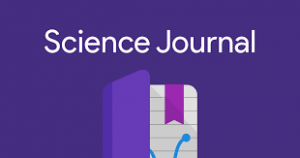
What is Google Science Journal? Google Science Journal is a cloud-based platform for K-12 science education. In Google’s own words, Science Journal ‘transforms your device into a pocket-size science tool that encourages students to explore their world. Google Science Journal is a platform that provides science resources and ideas for students and teachers. Its features include; accelerometers, light meters, and more–to help ‘do the science.’ In this way, it combines ideas (e.g., for experiments) and tools (an app that uses your phone’s built-in technology) in an attempt to be a kind of one-stop-shop science platform.
Pro’s & Con’s

Pros:
- A free alternative to expensive classroom light, sound, and motion sensors.
- Interactive for all students.
- Good for the environment (saving paper).
- Leave and explore outside of the four classroom walls.
- A great tool for inquiry based learning.
- Saves time for teachers.
Cons:
- Not all students have a smartphone.
- Confusing for students who struggle with technology.
Science Journal- a Teacher’s Perspective: By using science journal in your classroom, we are inspiring youth to have fun, be creative, engage with hands-on learning and learn new modernized experiments. This app will not only save paper, but it will save time. Most importantly, science journal will enhance our existing lesson plans, add external sensors and move learning outdoors.
Enhance your existing lesson plans
Use Science Journal with activities and assignments you’ve already prepared, and check out other activities that will engage and excite your students. From oscillating chemical reactions to using brightness to estimate the distance of a star, we have an activity that will fit your curriculum.
Add external sensors
With additional external sensors you already have or plan to buy from trusted vendors like Vernier, your students can conduct even more experiments that includes building a weather station or testing body conductivity. Some you may already have, others you’ll want to add to your inventory. Popular sensors include: light, conductivity, temperature, force, gas, heart rate, respiration, radiation, pressure, magnetism, and many more.
Move learning outside
The use of mobile devices along with the types of experiments we offer encourage students to get out of their seats, and open their eyes to the world around them through the power of science.
*Information received from: https://sciencejournal.withgoogle.com/teachers/
In my opinion, I would use google science journal, however I would have to be mindful what grades I am using this with. Being able to link some of these experiments to an elementary aged curriculum can come with challenges. However, for grade, 6-8, I could see how some of these experiments could link well to the curriculum big ideas in science.
Extra Resources:Google Science Journal Videos

The following videos give you a quick look at some of the science explorations you can do with the app in areas of physics and chemistry:
A brief overview of Google Science Journal: https://www.youtube.com/watch?v=9m1h9AVXuf4 (From Rich McCue Slides)
Inquiry Based Lesson Plan: WHAT IS A BUTTERFLY?
WHAT IS A BUTTERFLY?
- WHAT I SEE
- WHAT I KNOW
- WHAT I WONDER
Lesson Plan
Grade: 1
Time: 30 Minutes
Beginning the lesson: The students will explore the nearby butterfly garden. While they are exploring the garden they will observe and note in mind what they see, what they know and what they wonder about butterflies. (This is what the lesson will be based on- not included into time allocated to this activity).
What I See: The teacher will assign the students into pairs, what they will think, pair and share what they saw when they were outside exploring in the garden. Debrief: Class discussion based on the images of the different types of butterflies.This activity will be done by having the teacher choose the students whose hands are raised and sitting quietly and listening. (5-8 Minutes)
What I Know: The teacher will begin by showing and sharing the GIF of the butterfly whose wings are flapping. They will each receive a q card and write down as much as they can about what they know about butterflies and are welcome to draw a small picture on the backside of their q cards if they finished early. After this part of the activity is completed, they will discuss their findings as a whole class. (5-8 Minutes)
What I Wonder: I noticed the students were interested in drawing butterflies and wondered how to symmetrically make them. If the students are interested in drawing the butterflies then we will explore how to symmetrically draw butterflies using different mediums, such as: watercolour. By following along with the Youtube Video the students will be able to participate in an art activity and explore new relevant skills. This part of the lesson plan will take the majority of the time. (15-20 Minutes)
Video Link: https://drive.google.com/file/d/1ZlMeeO_4f8V1QDXvUkw_CpiIjLxydRjD/view
By: Angie Cauthers, Madeline Osgarby & Arnelle Basi
Impressions and Thoughts on Rebecca Bathurst’s Kindergarten Classroom @ George Jay Elementary School
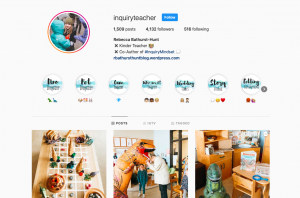
Today, my cohort and I were lucky enough to have the chance to speak to Rebecca Bathurst, a kindergarten teacher at George Jay Elementary School. I was very excited and have been looking forward to meeting Rebecca, as in our Literacy and Language Class last semester, our professor mentioned and referred to Rebecca’s work quite often. She also gave us her Instagram name; therefore, we could follow along with the work she does in her classroom. I have truly been inspired and have been following Rebecca’s work for a few months now. As we attended George Jay Elementary School and were able to observe a variety of inquiry projects the kindergarteners were working on. As I arrived early I got the chance to talk to Rebecca about her journey through the Elementary Education program at UVIC. She mentioned that after graduating with her masters, she was a part of the EXPLORE program, where she was able to travel and work and find what she was most passionate about as a teacher and what she wanted to bring into her classroom. Rebecca spoke to us about her experiences as a teacher and focused on Inquiry based learning and what it means to have an inquiry mindset. Rebecca discussed the different types of inquiry such as: structured, controlled, guided and free inquiry. She explained and gave several examples of how to do each of these. I have never been so truly inspired. Throughout Rebecca’s talk she stressed the importance of beginning a lesson with a question, therefore you are guiding and allowing children to think of three specific things; what we see, what we know, and what we wonder. Rebecca also mentioned the importance of provocations and I totally agree with her about how this can create and inspire curiosity for our learners. All in all, she pursued us how to incorporate more inquiry into our teachings and demonstrated how to relate students interest and inquiry to the BC curriculum. Some advice Rebecca gave us about our practicums that really touched me and I was able to relate to was that she mentioned how we as teachers set high standards and expectations for ourselves and practicums and learning in general is so set up so we do fail and that failure is okay is the process of learning. This touched me, because I am one of those people who am very hard on myself and set high standards. Additionally, while we explored Rebecca’s kindergarten classroom, I was able to take a few images of what I thought was unique and I would potentially incorporate into my future classroom. I really enjoyed that the classroom did not feel like a classroom and felt more like a home. Below are a few images of the layout of Rebecca’s classrooms and a few centers/objects she had out for the students to play with. Ultimately, this field trip was very beneficial for myself, because I would like to become a kindergarten teacher as well, and seeing a unique creative classroom setup and a different way of teaching made me excited for my practicum and future as an elementary school teacher.
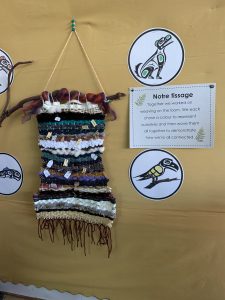
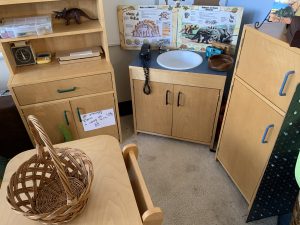
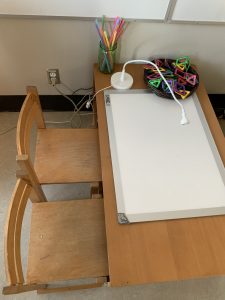
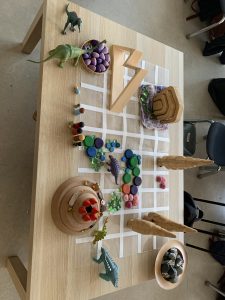

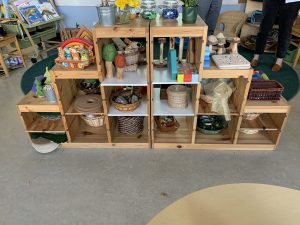
How Can We Use Video To Support Learning?
Videos can be utilized in a variety of different ways within a classroom setting. Not only does videos help support the learning of the students but teachers also benefit in using video in their classrooms. Some of the benefits for the teacher using video in the classroom include; videos are easier to be accepted by the students, it immerses students in the production, it stimulates activities, sometimes videos can bring more information, they engage learners, they integrate the outside world into the classroom and they can often create an experience. For more information regarding the benefits of teachers using video in the classroom, please visit: https://filmora.wondershare.com/video-editing-tips/benefits-for-using-video-in-classroom.html. On the other side, videos help supports the learning of the students by keeping them engaged, giving them details to information, and ultimately, they are used to amplify the students learning. According to cincopa education, the following link: https://www.cincopa.com/blog/10-reasons-to-use-video-for-education/,listed are a few of the reasons to use video for education, as it is a visual stimulation, which grabs students’ attention, there is an emphasis placed on digital literacy, remote teaching opportunities expand exponentially, there are a few ways teachers can use classroom videos, the stimulation of higher order learning, the variety of videos available, the teacher becomes a facilitator, video hosting is a growing industry, videos can be used to accommodate attention spans, and videos are excellent marketing tools. This website also includes a quick 30 second video which addresses the reasons to use video for education. Additionally, using video to support student learning can often be difficult, if the uses of video in learning was unclear. Therefore, to clarify, it can be used through animation, whereas it is usually used as a snappy way of delivering compressed messages, but perhaps with more detail than your average video. It can be used in a factual documentary, ted talks, how to, comedy or even role-play. Below is an attachment of a video, which is four-minutes long and discuss why videos are important in education: https://www.nextthoughtstudios.com/video-production-blog/2017/1/31/why-videos-are-important-in-education. Additionally, in Tech class today we worked on video editing with iMovie. After much deliberation and assistance from my peers I came to the conclusion that my laptop was not updated and did not support the iMovie application. Although, trying to get the application downloaded on my phone, took a very long time, during that time, I was able to watch my peers and collaborate in their video making. I have also used iMovie in the past and am quite familiar with the application, which is why I felt the need to not include a video attachment.
Flashcard Apps: Quizlet
Today in class, Maddie, Catrina, Brittany, Angie and I researched flashcard apps, in particular Quizlet. Below are our findings on Quizlet:
Flashcard Apps: Quizlet
Link: https://quizlet.com
What is Quizlet? Quizlet is a free website which provides learning tools for students of all ages. It includes a flashcards section, learn section, write, spell and test section. It makes learning fun! It is a digital take on the simple Q cards, which allows for students to think and share to learn. Below is a link to a Youtube video, which explains what Quizlet is. Link: https://www.youtube.com/watch?v=7oJk0IBynoU
Did you know?
- That 90% of students receive higher grades when using a quizlet to study.
- It is an American Company.
- It was invented in California.
- It has seven study modes.
- You can share your Quizlet’s with your friends.
- You can include Quizlet diagrams.
Study Modes and Games: Quizlet lets users create sets of terms and their definitions. These sets can then be used with several study modes
- Flashcards: this is the most commonly used mode and it simulates paper flash cards. Users are shown a card for terms and they can flip it over by clicking it to see the definition
- Gravity: In this mode definitions move vertically down the screen like asteroids. Users must type the correct term before it reaches the bottom of the screen. Gravity is one of the ‘Play’ study modes
- Write: in this mode users are shown a term or definition and must type the term of definition that goes with it. Users are graded automatically
- Long term learning: In this mode users are given a study set that has been recommended to them based on whether they answer study set questions correctly. Terms are repeated if answered incorrectly. A dashboard shows learning progress. This mode focuses on spaced repetition to stimulate long term retention and mastery rather than short term memorization
- Speller: in this mode the term is read aloud and students must type the term correctly. Correct responses are rewarded with a video of a monster truck using a flip
- Match: In this mode users are shown a grid of terms in random order. They must drag terms on top of their definitions
How is Quizlet Used in the Classroom? (Pros and Cons) Here is a good link for some pros and cons of using quizlet in the classroom: https://www.aeseducation.com/blog/quizlet-pros-cons Because quizlet is a public website, anyone can go on and create a set of study notes. However, this freedom can lead to the spread of misinformation. Educators can combat this by creating study sets for their students and encouraging them to work with their peers to create concise notes. Another problem with quizlet, is that if one word is out of place, the website will mark the answer as incorrect.
Quizlet Live is an in-class tool similar to Kahoot for quizzes using devices. The students are shown a question on the board and must choose the correct response on their device (phone, laptop, or tablet). It is important to weigh the pros and cons of Quizlet, to decide whether or not it will work in your class.
Pros
- Free
- Allows students to share and create their own quizzes using various forms (MS, short answer etc, matching)
Cons
- Could be used to encourage cheating, as students can copy/paste material and find answers to online quizzes.
- Could provide false info because anyone can make a quizlet
History: Quizlet was first created by Andrew Sutherland while he was studying for his French class to help him memorize words. The coding for this program took him over 420 days to create, and was then posted to the public in October of 2005. Over the years Quizlet has been revamped and restructured to grow with modern day technology. Quizlet was then developed into an app available for iphones and androids so that students could view their flashcards anytime, anywhere.
Privacy Policy: Information from Quizlet is stored in servers in the United States, which as we know, have different privacy laws than Canada. Quizlet keeps the information as long as the account is active. The information Quizlet can gather include: login information, google and Facebook accounts, language, and local time zones.
GROUP: Catrina Moyes, Angie Cauthers, Maddie Osgarby, Brittany Johnson & Arnelle Basi.
The Pro’s and Cons of Formative Assessment
There are a variety of pros and cons of formative assessment. In my opinion, I believe the pros outweigh the cons of formative assessment because if formative assessment is done correctly, there are no disadvantages to the student. Ultimately, this type of assessment is considered time consuming for teachers as they analyze results from daily assessments to provide detailed feedback to each student. In my future teaching, I would like to implement more formative assessment than summative assessment into my classroom, because I believe that the progress in student’s learning will become more evident.
What is Formative Assessment?
Formative assessments are a way that teachers are able to check the understanding of the students throughout a lesson, instead of waiting until the end of a lesson to test their knowledge. Formative assessments support the learning of students and allows for teachers to check for understanding.
Advantages of Formative Assessment
The advantages of formative assessment include; that formative assessments are not graded, teachers are able to check for understanding, therefore if a student is struggling during a lesson they can get the help they need in class. Additionally, the most common form and example of formative assessment is ongoing feedback. If teachers are able to provide ongoing feedback, the students are able to make changes to their learning style or even adapt or change the way they are doing something, without being graded.When formative assessment is implemented, some of the benefits include: defined learning goals, increased rigor, improved academic achievement, enhanced student motivation, increased student engagement, personalized learning experiences, self-regulated learners and data-driven decisions.
Disadvantages of Formative Assessment
Once again, if formative assessment is implemented well there is little to none disadvantages of formative assessment. Some of the downfalls, however, include; not having enough time to assess during a lesson, teachers feel rushed to complete a lesson, teachers may lack training on how to use formative assessment and if a teacher consistently uses formative assessment in their classroom, the students may not take it seriously.
Types of Formative Assessment
Some types of formative assessment include; teachers using summarising techniques, digital or non-digital portfolios, checklists, collaborative work, group projects and small achievable goals (goal setting). Other examples include; using round robin charts, strategic questioning, three-way summaries, think-pair-share, 3-2-1 countdown, classroom polls, exit/ admit tickets and creative extension projects.
When to use formative assessment?
The ultimate goal of formative assessment is to gauge student learning and adapt content correctly. Formative assessment should be used to monitor students learning progress during the lesson, or even when the teacher is teaching the lesson, by focusing on one or two students for different parts of the lesson, it will ensure all students are being assessed. However, this is one of many strategies.
Below is a link to a video, which discusses what formative assessment is and some strategies and examples to go along with it:
http://https://study.com/academy/lesson/what-is-formative-assessment-strategies-examples.html
What is the difference between Formative and Summative Assessment:
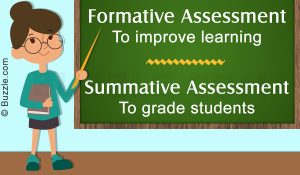
Impressions and Thoughts on PSII
PSII is the pacific school of innovation and inquiry. This school is an alternative school also known as a special education school. This school serves diverse learners and allows them to learn at their own pace, and how they would like. Today, we had the opportunity to visit PSII and I am grateful to have had the opportunity to visit, explore and gain new knowledge. Although this alternative school was directed towards secondary students, I believe the idea and structure of learning should be also implemented into elementary schools. Learning through inquiry, allows students to work at their own pace and learn about things that interest them. While we were at PSII, the principal, Jeff Hopkins spoke to us about what the school offers, its pedagogy and informed us about some technology tools their students use. I found it very interesting to hear that all students are given a laptop and that they use Trello, to stay on top of their work and therefore their teachers can also see what they are doing with their inquiry questions. Another thing I found intriguing was that there is no structured schedule or bells to tell the students to change subjects, however the teachers put on classes and they are optional for the students to attend. PSII is a small school of 96 students, but its authentic personalization makes it such an accepting environment to learn in. Jeff Hopkins stated that a majority of their students are on the spectrum or struggle with anxiety and depression, therefore they had sensory rooms to help these students. Finally, my experience and thoughts on PSII is breathtaking. I was truly amazing and inspired by the learning and the projects many students were working on, as they are ultimately designing their own learning paths. As future elementary school teachers, we need to learn from this visit and apply this technique and pedagogy of learning into our teachings.
Below is a picture of the common area of the pacific school of innovation and inquiry, where students of all grades in secondary school may communicate and collaborate with their classmates. This type of learning environment allows children to bounce ideas off of each other and gain new perspectives about their inquiry topics and subjects.

Reflection on Inquiry Based Learning
I believe that inquiry based learning is a diverse and accepting way to include every individual child’s thoughts and ideas. Inquiry based learning allows student’s the opportunity to have a voice and a choice of what they are learning. Students are more likely to be intrigued and motivated to learn if they are choosing what they are learning and how they are learning the material. Inquiry based learning allows students to develop their communications skills, collaborating outside of the classroom, helps them deal with problem-solving and allows them to participate in creation.
There are four types of inquiries which are; confirmation, structured, guided and open inquiry. Confirmation inquiry is when learners are given a question, and there is an end result, which is already known. Structured inquiry is when learners are given the question, but he goal is to provide an explanation that is already supported by the evidence gathered. Guided inquiry is when the learners are only given a question with no answers or results. Open inquiry is when the learners form their own questions and they must show the results in what they have found or find.
There are several benefits for inquiry based learning which include; that it reinforces curriculum content, it warms up the brain for learning, it promotes a deeper understanding of content, it helps make learning rewarding, builds initiative and self-direction, works in almost any classroom (depending on the age group) and it offers differentiated instruction.
Personal Connections to Inquiry-Based Learning: I had several opportunities in Elementary school to participate in inquiry based learning, whether this was in partners, individual or groups I found it to be very interesting and useful. In high school, I did a few individual inquiry- based learning projects, which allowed me to explore and research topics of my choice. By having a choice, I was more interested and motivated on coming to class and working on my project.
*I have also attached two spate Youtube videos which I found very useful and interesting. One video discusses the importance of inquiry based learning, and the other video explains what inquiry-based learning is.